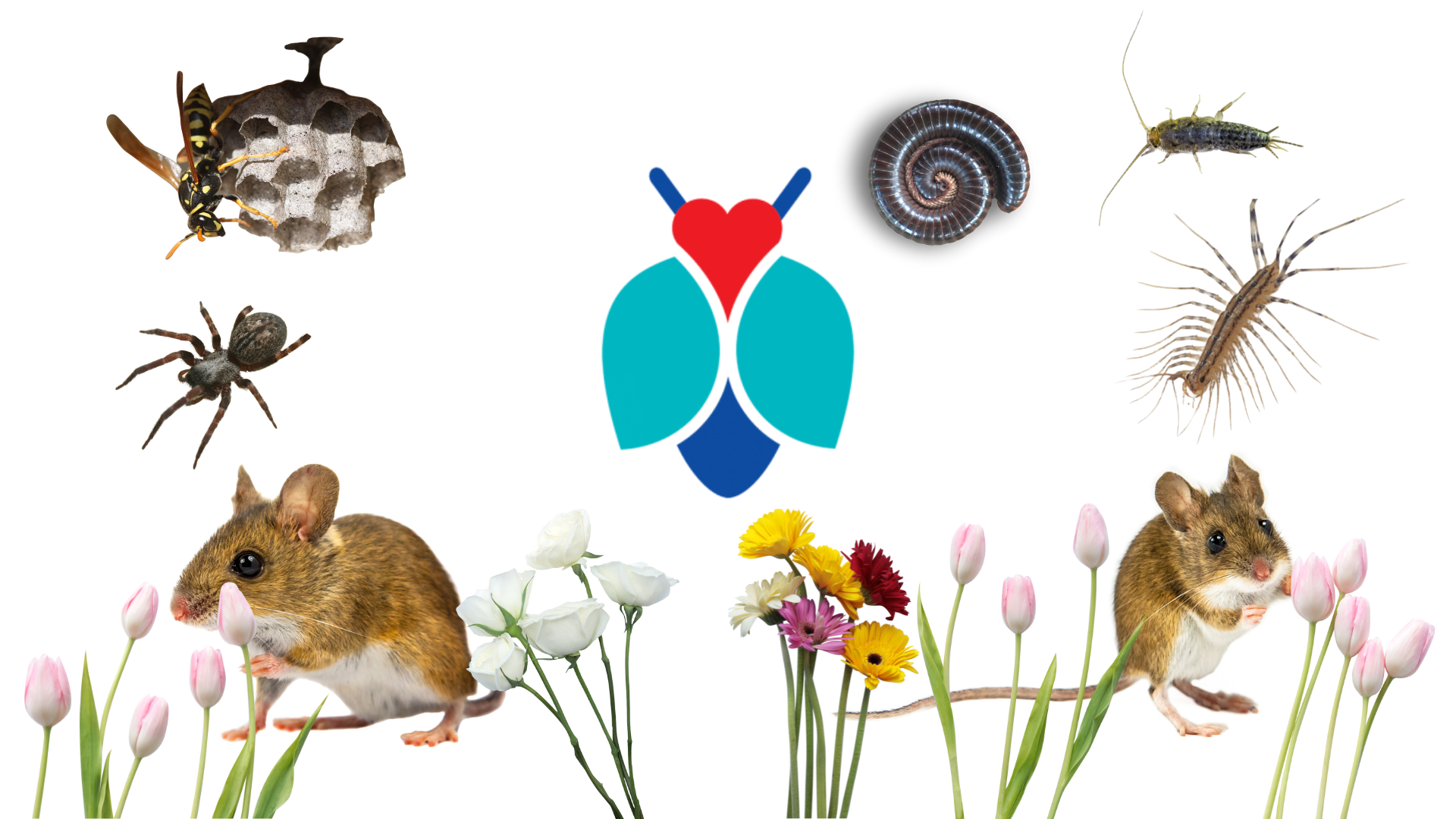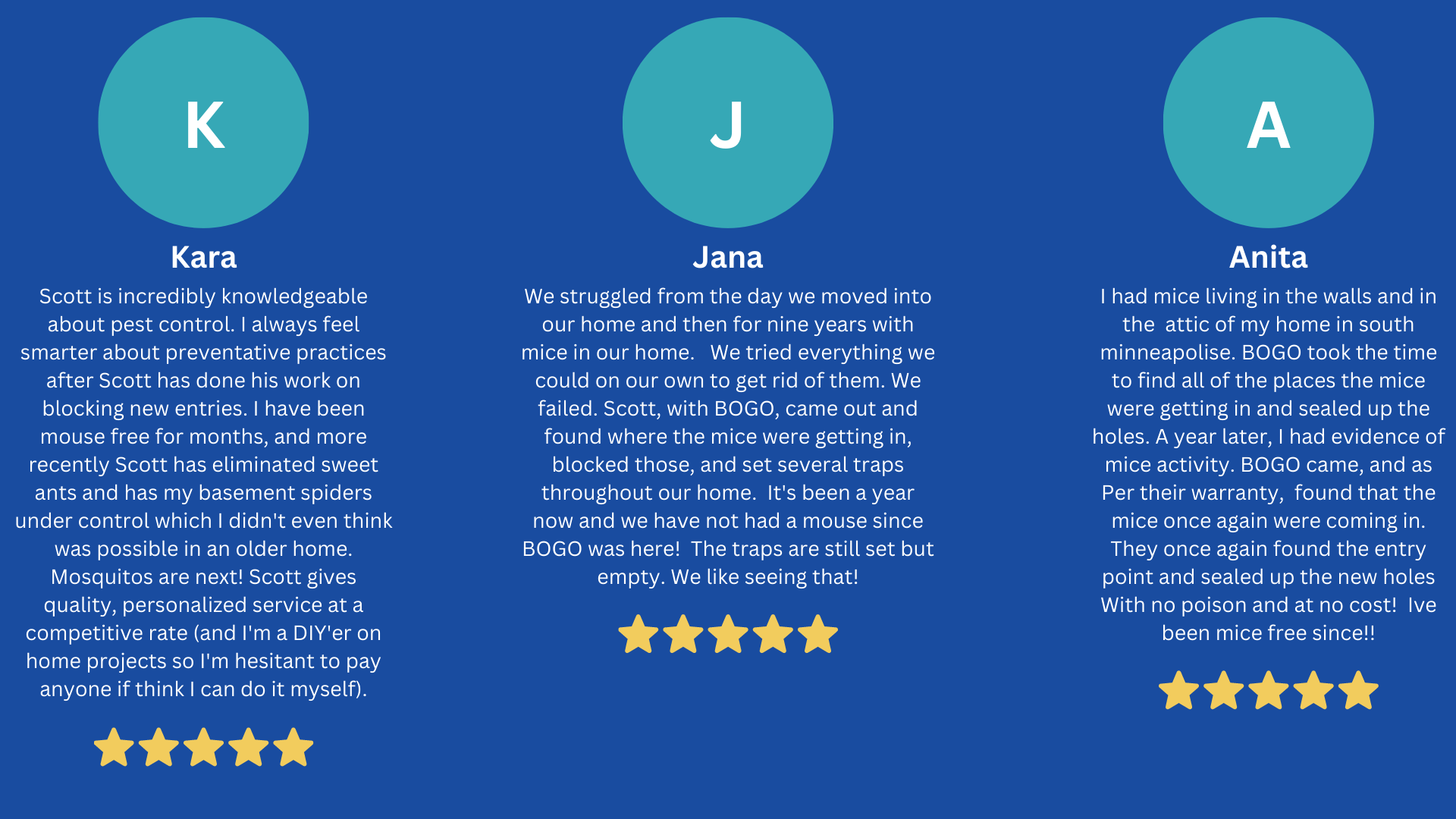BOGO Provides Spring Pest Control Services For the Twin Cities and Beyond! Just a Few Cities We Service For Include;
Anoka|Apple Valley|Bloomington|Burnsville|Coon Rapids|Champlin|Chanhassen|Deephaven| Delano|Eagan|Eden Prairie|Edina|Elk River|Excelsior|Independence|Lino Lakes|Maple Grove|Maple Plain|Medina|Minneapolis| Minnetonka|Minnetrista|New Brighton|North Oaks|Orono|Prior Lake|Plymouth|Ramsey| Rogers|Shoreview|Shorewood|Stillwater|St. Louis Park|St. Paul|Victoria|White Bear Lake|Wayzata|Woodbury|
(Click on the cities to learn about what pests to watch out for in your area)
BOGO Provides Services to Help Get Rid of These Minnesota Spring Pests
If you have any questions or concerns or would like to schedule an appointment call us or send us an email
Call Us Today! 952-404-BOGO (2646)
Share This Page!
Ants in Spring
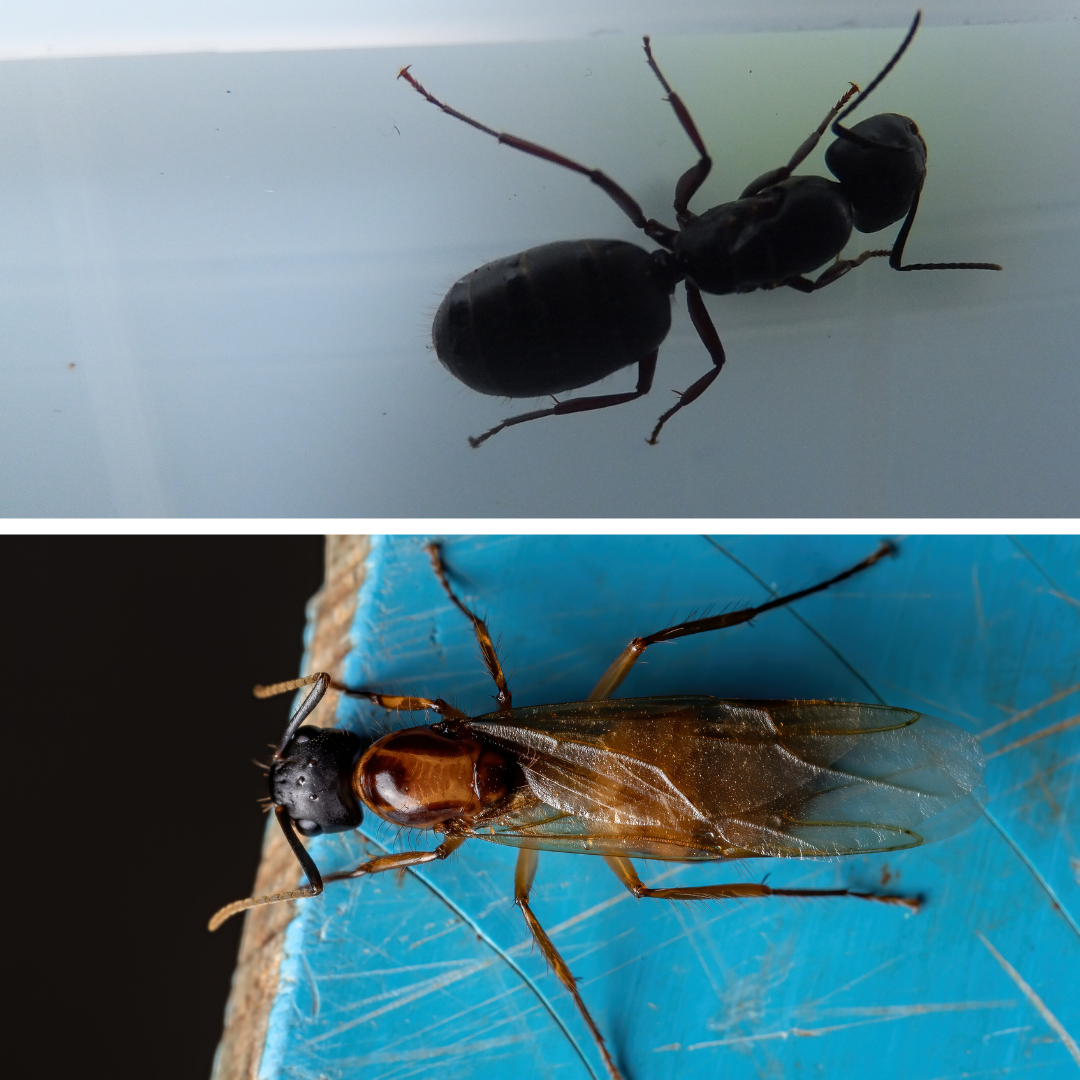
Carpenter Ants
Seeing carpenter ants inside can result in many people fearing that the structure of their home is being compromised. But this just isn’t true. Carpenter ants are only attracted to wood that is already damaged. They use soft water-damaged and rotted wood to chew small tunnels through. They do not eat through entire wooden structures like termites do. Termites also eat wood that is in good condition and not just water damaged.
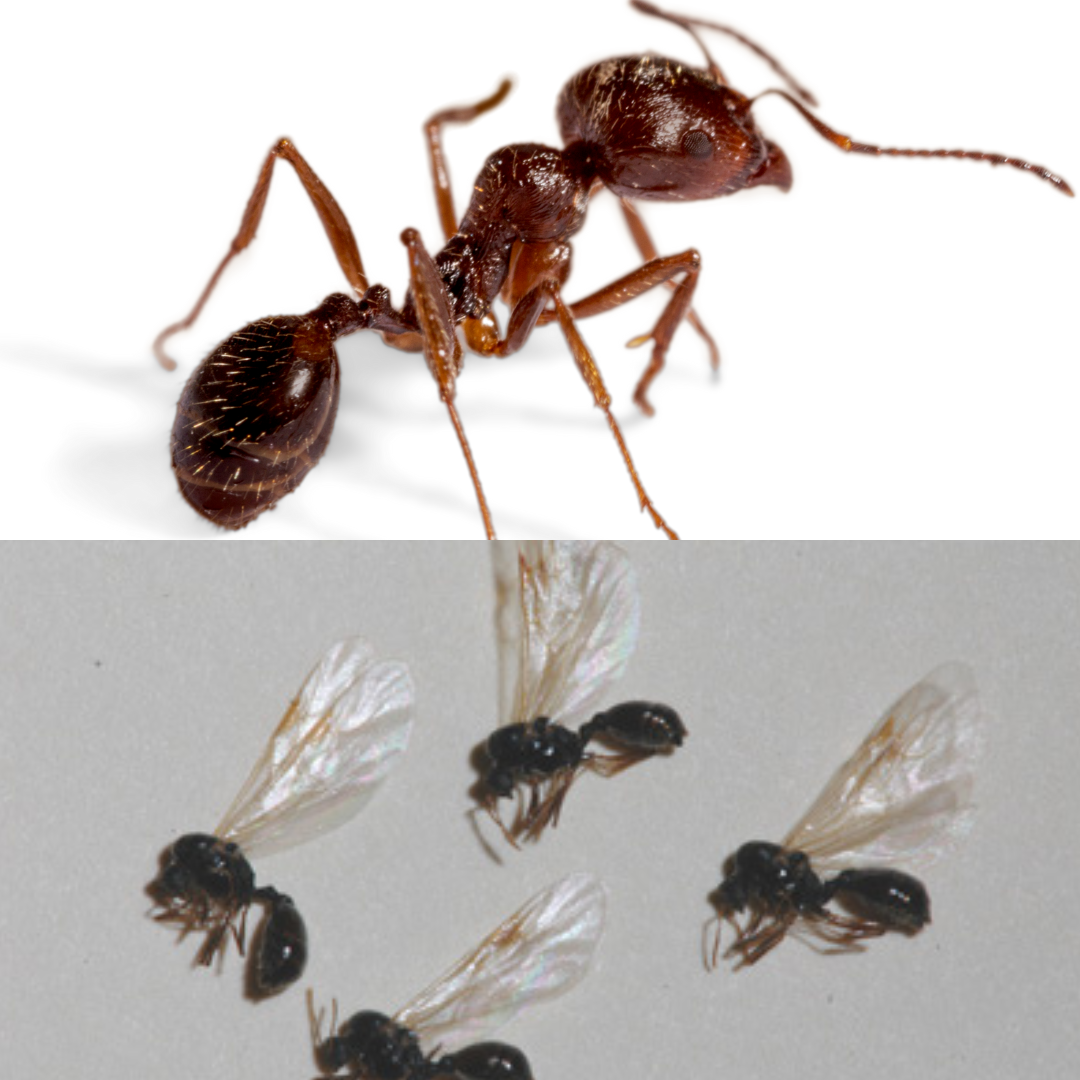
Pavement Ants
Pavement ants are one of the most common ants to be seen inside. They have a large varied diet that consists of foods such as dog food, bread, any foods with sugar, insects, seeds, fruits, and other human foods. If a crumb or juice spill falls on the floor of the home with pavement ants they will find it. Pavement ants commonly build their nests under driveways, sidewalks, pavers, insulated foundations, and under slabs on grade homes.
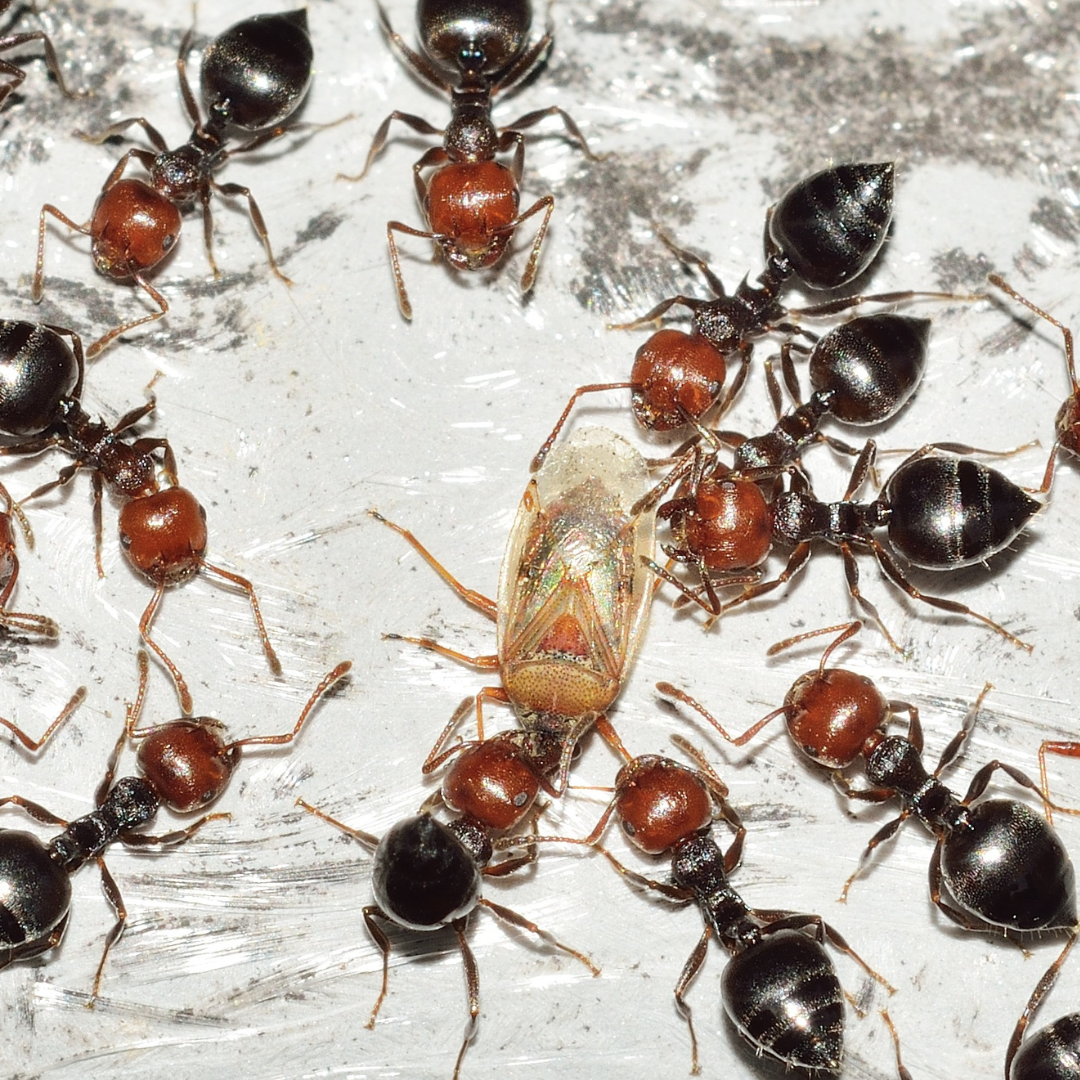
Acrobat Ants
These unique ants get their name from their bodies’ positioning when they feel threatened. They will lift their thorax above their heads as if doing an acrobatic stance. Another easy way to identify them is by looking at their heart-shaped thoraxes. These ants also prefer to live inside the wood in homes like carpenter ants. Except they usually move into previously made nests by carpenter ants. They do not eat wood or chew through wood.
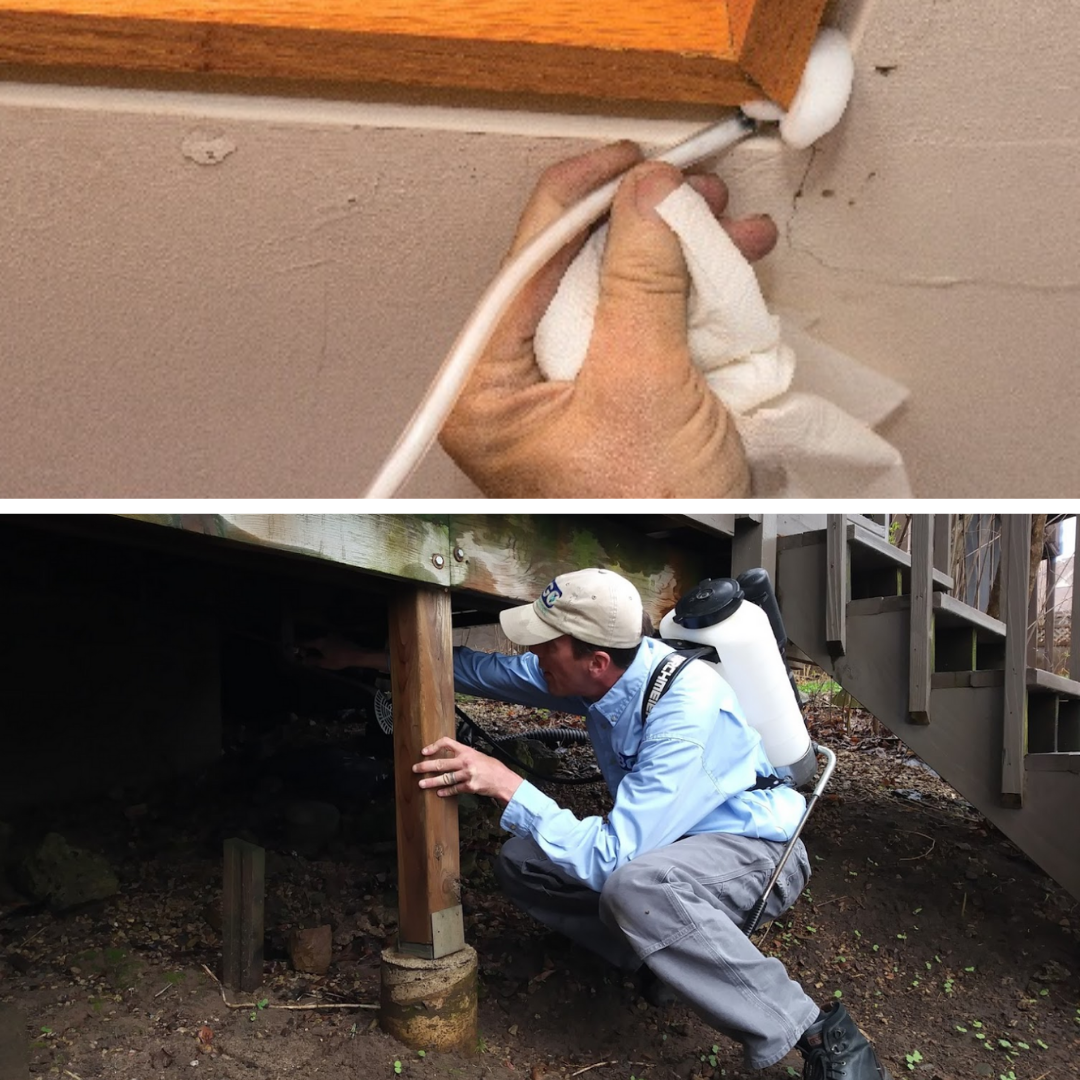
Our Ant Service
Ants live in large social colonies. In each nest, only 10% of the ants ever leave the nest. The rest of the colony stays in the ground. The over-the-counter ant killer will only affect the ants inside the home and will not affect the rest of the colony. By not killing the rest of the colony the ants will continue to reproduce. BOGO’s product is unique in allowing the ants inside the home to bring the treatment back to the rest of the ant colony. Once they are back inside the nest the product will spread and eradicate the entire colony including the queen.
To learn more about ants visit our ant identification page
Moisture Pests in Spring

House Centipedes/Millipedes
House centipedes are one of the most feared insects inside a home. House centipedes are easily distinguishable. They have 15 pairs of legs and grayish-yellow bodies with dark brown stripes. They become more active inside during the spring and summer. They feed on insects like spiders, millipedes, and other arthropods.
Millipedes are also easily distinguishable with their worm-like bodies and their 400 short legs. When they feel threatened or die they will curl up. They feed on decaying organic matter.
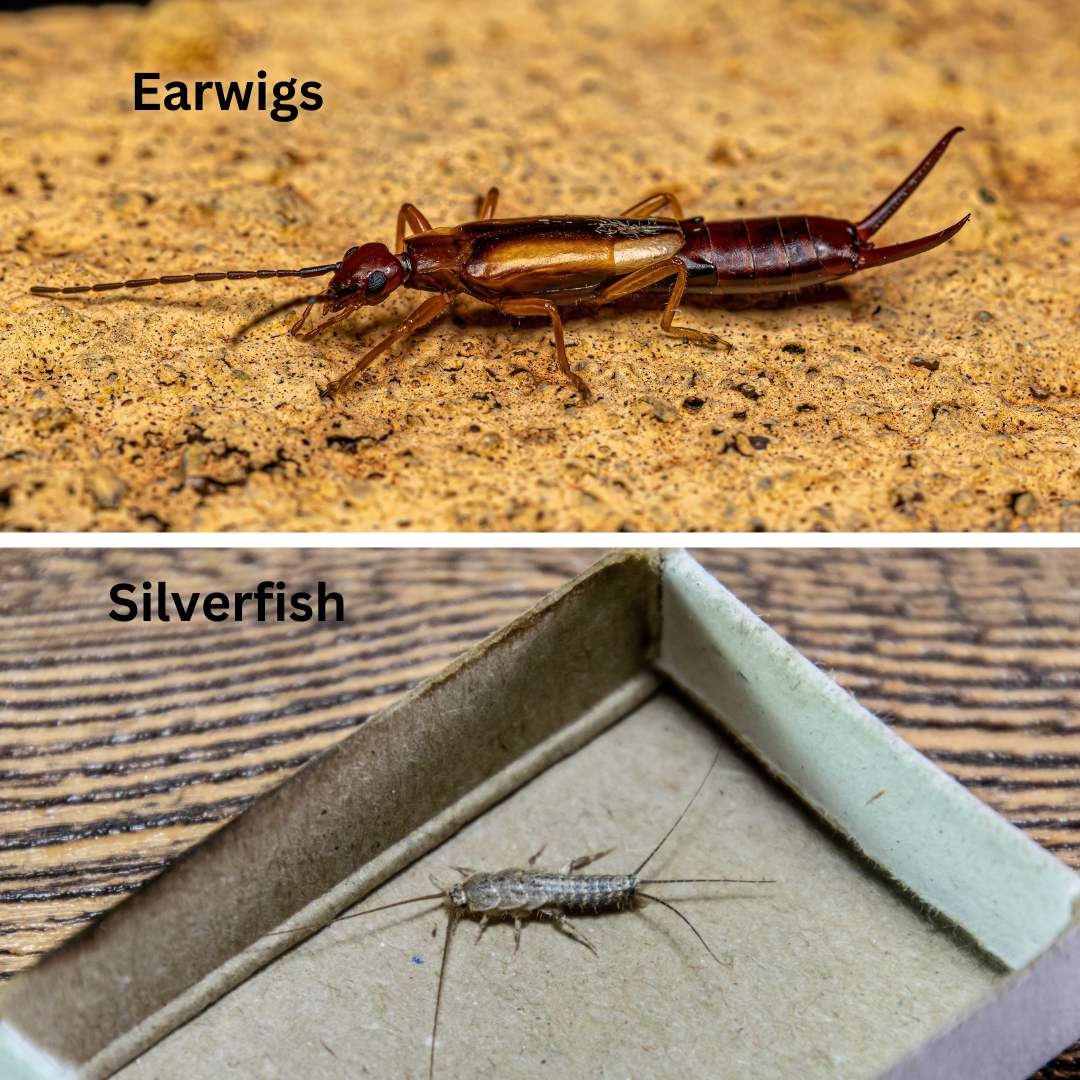
Earwigs/Silverfish
Earwigs have a unique appearance with their large pincers used to protect themselves and attack their prey. Their diet mostly comes from; damaged and decaying plant matter and weak or dead insects. But they can also eat healthy and alive plants. They are commonly seen living under potted plants inside or outside homes, in leaf litter, and between cracks in cement and brick pavers.
Silverfish get their name from the silver and metallic scales on their body. They commonly infest things like cereal, wallpaper, books, and other items with starch. They lay eggs inside them and can leave small pits and contaminate the food they feed on.
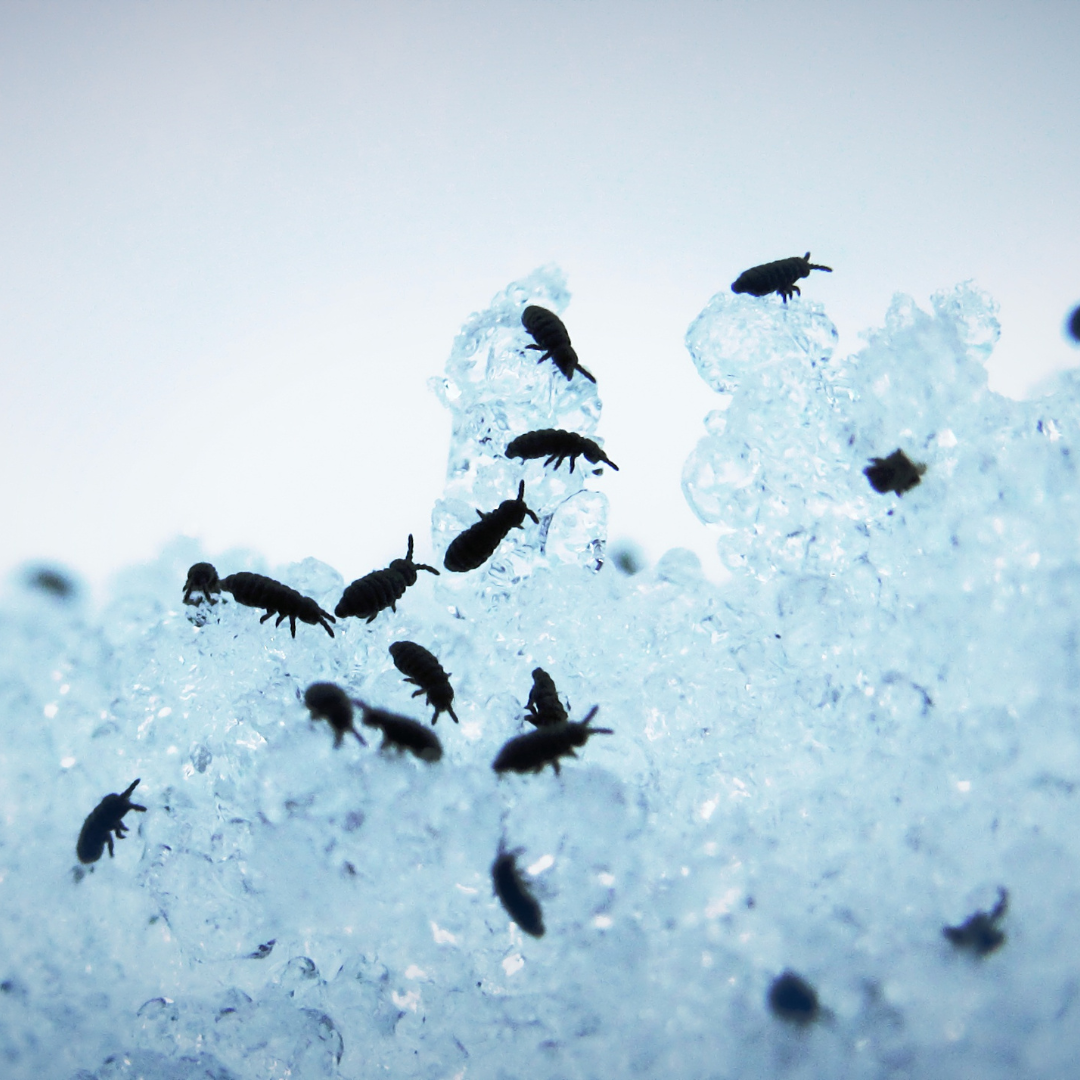
Springtails
Springtails can vary between black, grey, or brown. They can’t fly but they are capable of jumping several inches off the ground. They can commonly be misidentified as fleas but have distinguishable differences. Fleas are much harder to crush and kill, have flatter bodies, and are often much brighter in color. Springtails feed on decaying organic matter, algae, pollen, and fungi. They can be found in large numbers inside mulch. Homes with mulch landscaping surrounding the home can be susceptible to seeing springtails inside. When it dries outside they start to move inside the home to search for moisture. Unfortunately, pesticides are not effective against springtails.

Our Moisture Pest Service
Our moisture pest service is specifically done in the springtime. Many Minnesotans know how wet the ground becomes after the snow melts. In springtime homes with sub, pumps are continuously draining out the groundwater surrounding the home. This makes basements very damp and sometimes flooded. During the treatment, we focus on spraying along the foundation of the home and inside basement window wells. To help cut down moisture pest activity inside clean up any leaf litter that is touching the home, especially inside basement gully windows.
To learn more about house centipedes read our blog “The House Centipede-A Fearful, but Beneficial Creature”
To learn more about springtails visit the University of Minnesota Extension springtail page
Mice in Spring

Mouse Behavior
All species of mice behave similarly. Some of the similarities include; they’re nocturnal, don’t hibernate, breed all year, and almost always live in groups. Their groups are made up of many females, their offspring, and 1 or 2 males. When they decide on a place to nest they use a scent trail to help the rest of the group locate the nest. These scent trails are made from the mice periodically leaking out urine. It’s common to see these scent trails along the foundation of the home and on pipes or vents going into the home. When the mice are inside they prefer to nest inside the loose insulation. Seeing holes or tunnels inside insulation is a great indicator that mice are living inside.

Our Mouse Service
The mouse service we provide is our niche service. Our goal is to completely mouse-proof the home and do this by sealing up any exterior entry points. The spring and summer is the perfect time to get this service done for many reasons. One is that there are most likely fewer mice living inside at the time. Because of this, there is a better chance there will be fewer mice to catch inside. After we seal up the home from the outside the mice inside are not able to get out and need to be caught in snap traps. Another reason why spring is a great time for the service to be done is that we can get on roofs to seal entry points. With our service, we provide full 2-year warranties or 2-year and 2-visit warranties depending on the limitations keeping us from sealing the entire home. Some limitations can include extremally steep roofs and cedar shake roofs.
Click below to learn about BOGO’s signature mouse service and for tips on how to keep mice from getting inside your home
Spiders in Spring
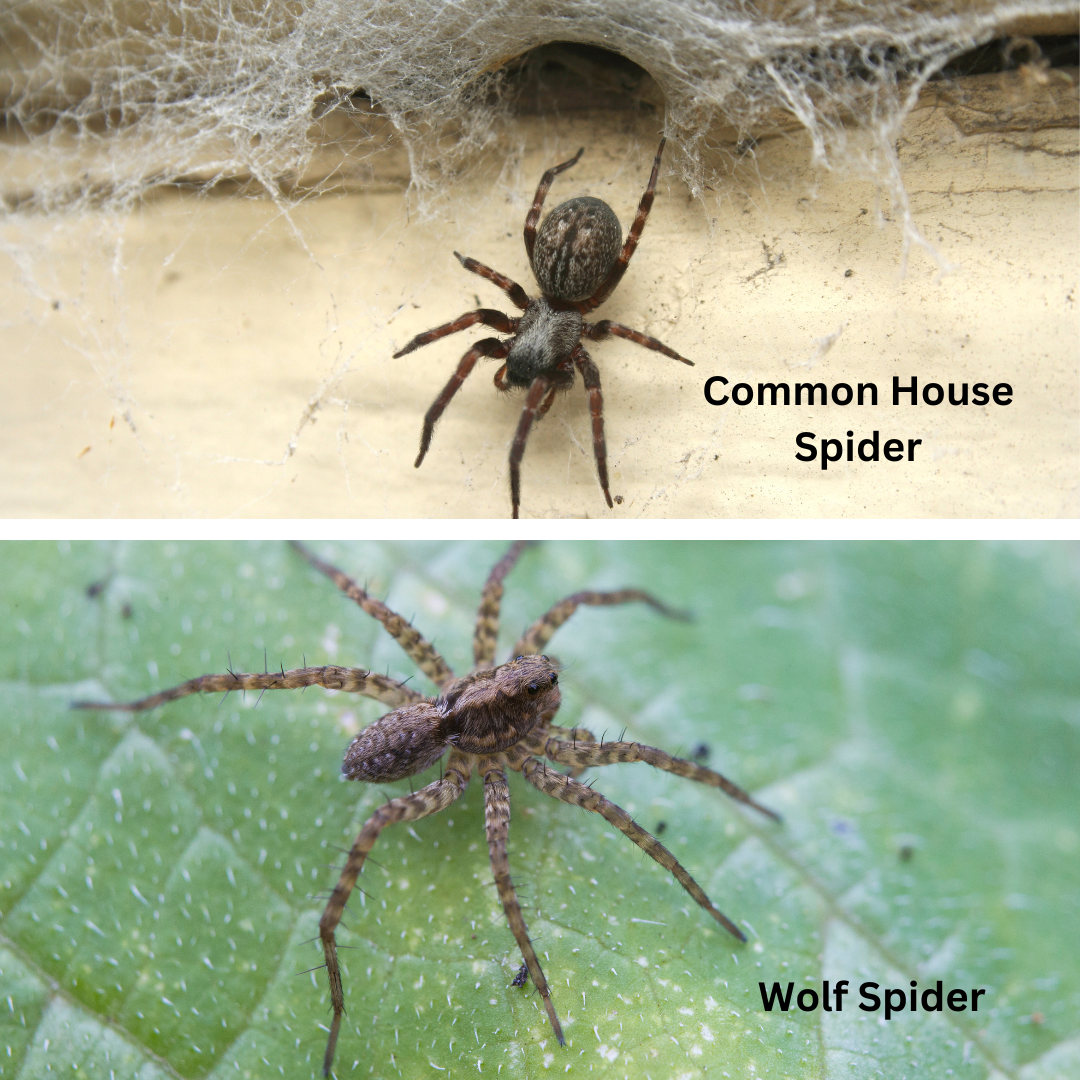
Spider Behavior
Spiders that live in Minnesota can be split into two categories. Hunting spiders and web-building spiders. The most common hunting spiders we have here are; the wolf spider, jumping spider, and sac spider. These spiders do not build webs instead they live in small dens under rocks, logs, or in an unfinished room in the basement and will leave their dens in search of insects to eat. The second type of spider is the web-building spider. The most common web-building spiders include; the common house spider, harvestmen (daddy longlegs), garden spider, and cellar spiders. As their name suggests these spiders build webs and wait for the insects to come to them instead of going to hunt for them.
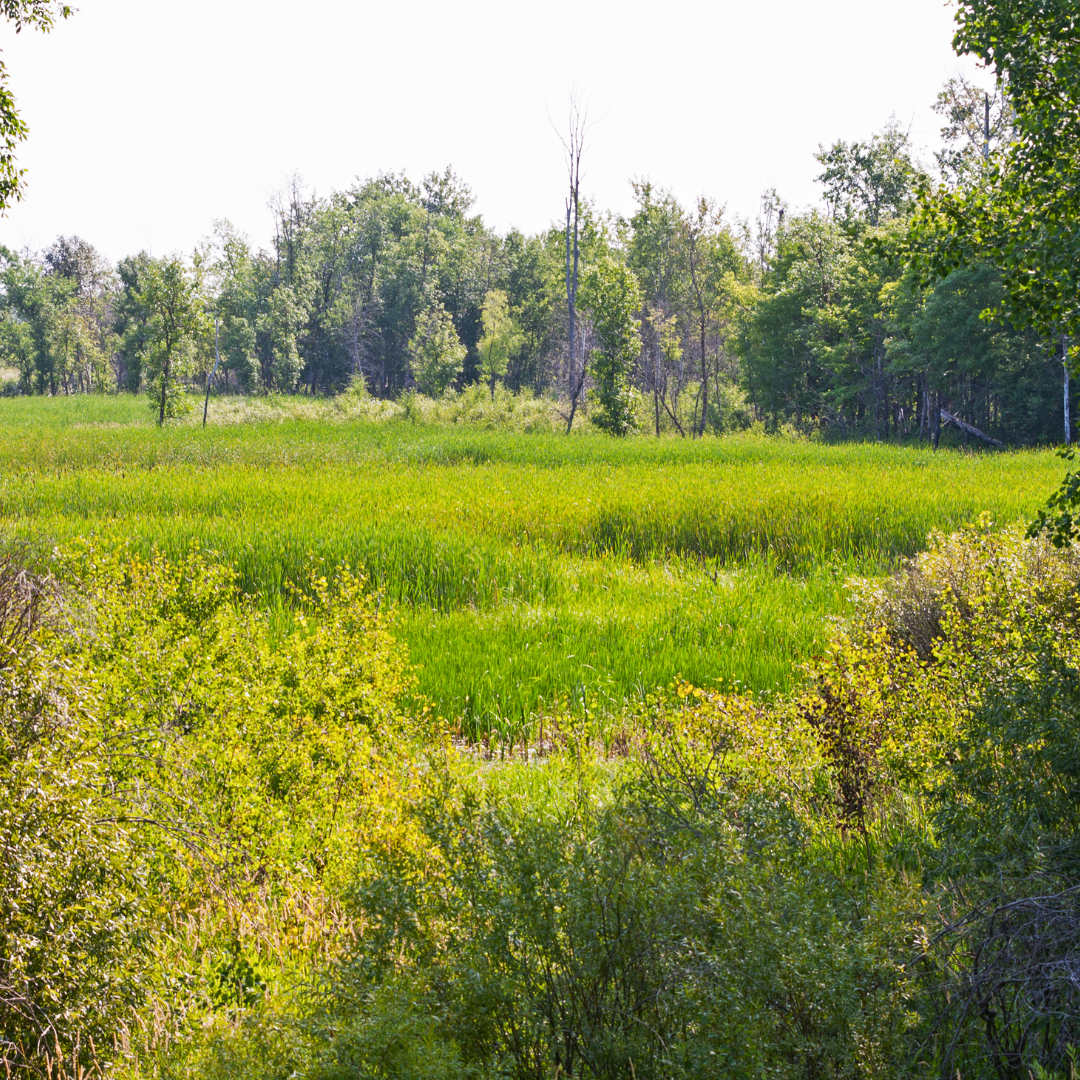
Spider Habitat
All spiders prefer to live in heavy insect-infested areas. Spiders that live outside are commonly near water or in wooded areas. Bugs such as mosquitos, flies, and ticks live or hatch out in the water. More insects mean more food for the spiders. For homes with large spider populations inside there is most likely a moisture problem. Homes with damp basements attract other insects such as; ants, centipedes, springtails, etc. Spiders will also most commonly live inside unfinished rooms because the wires and pipes are used by other insects to navigate throughout the home.
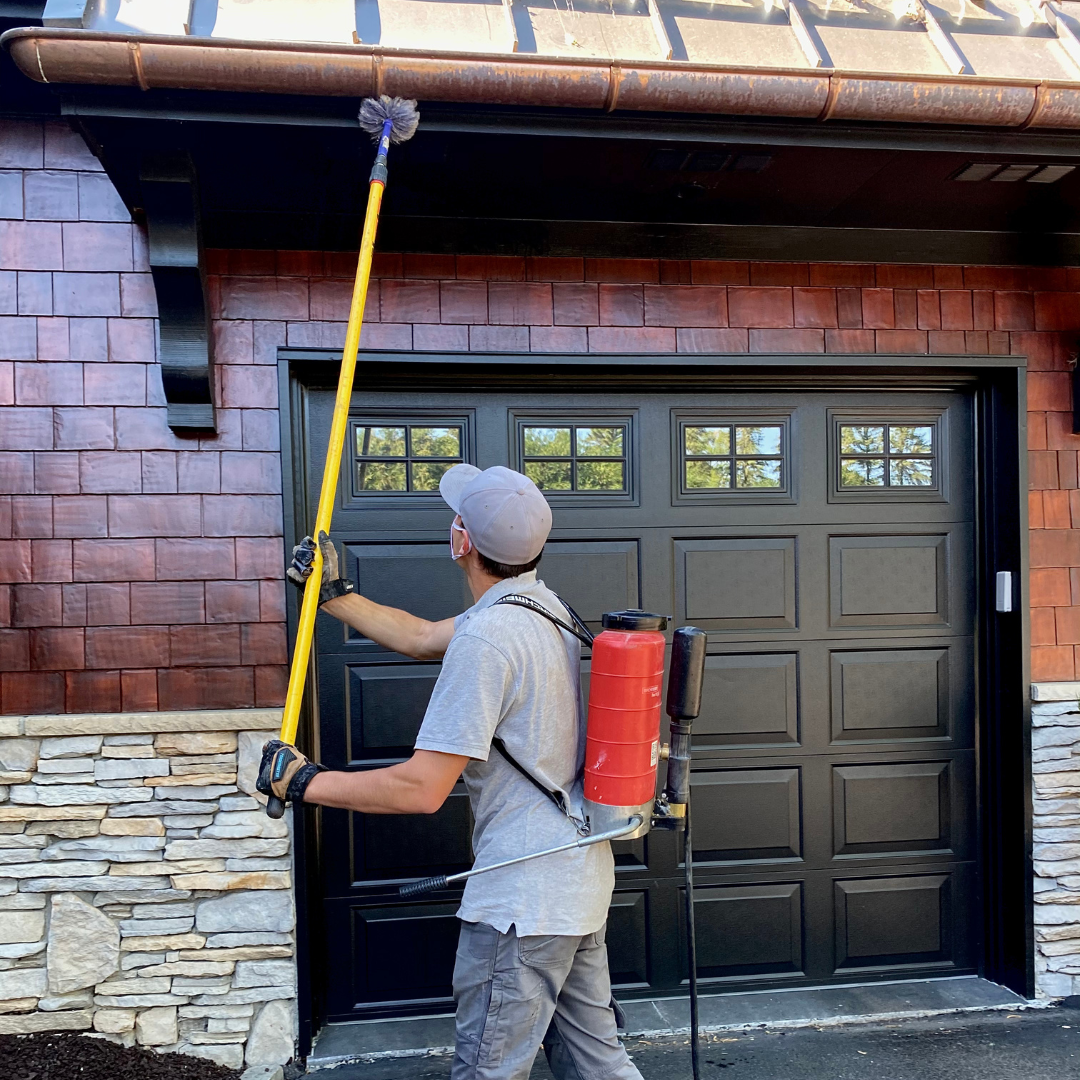
Our Spider Service
The spider service we offer is thorough and effective. With it, we start knocking down any cobwebs that are on the outside of the home. We then spray along the soffits, foundations, corners, and around windows. These areas are important to spray as they are the most common entry points for spiders and other insects. Most of the spiders that are inside the home come in from outside. We offer interior treatments to kill any spiders that may have hatched in the home. Spiders’ eggs can hold hundreds of baby spiders so when they hatch a spider problem can grow dramatically.
To learn more about spiders read our blog “We Love Living Near Woods and Water and so do Spiders!”
Wasps in Spring
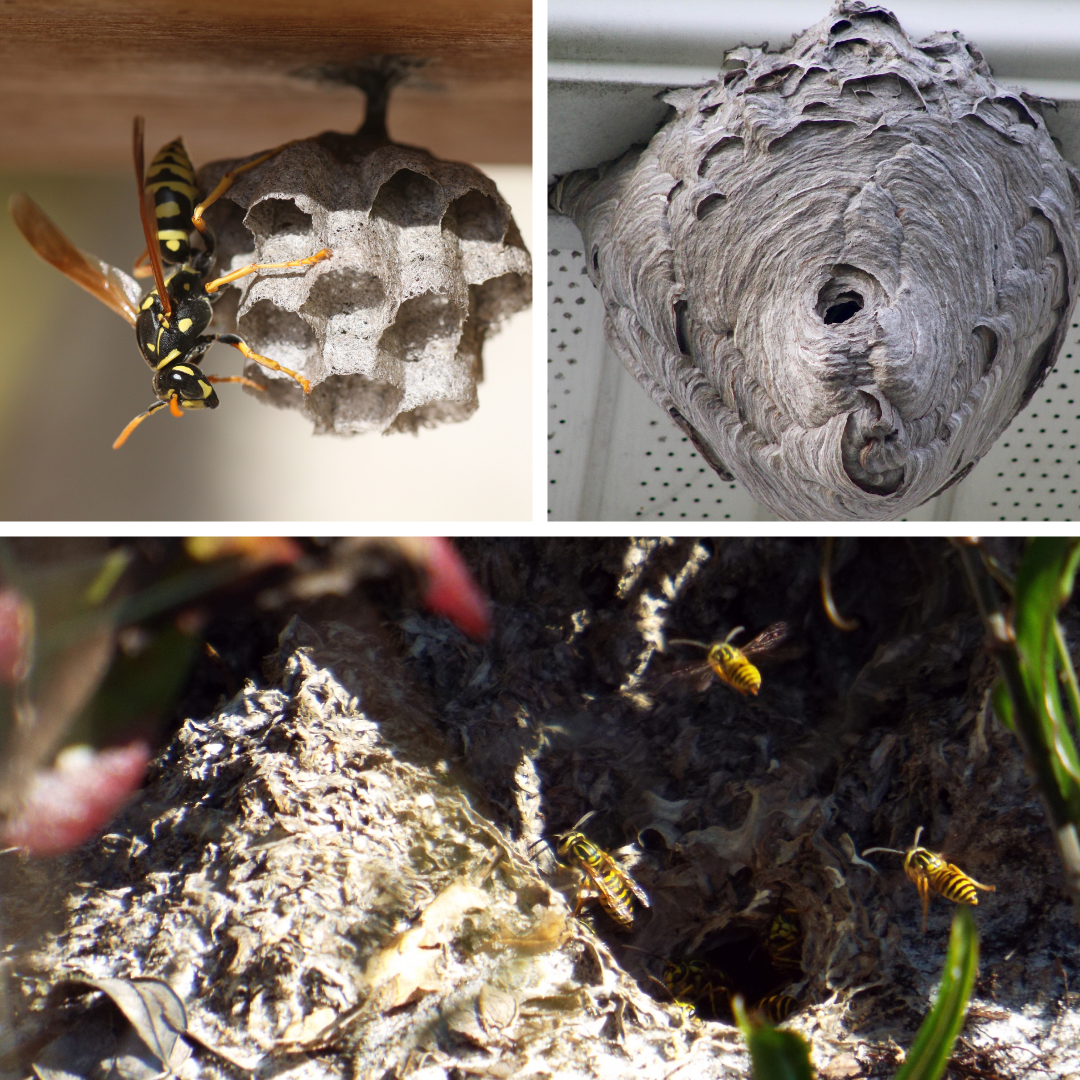
Wasp Behavior
Wasps in the spring aren’t usually as aggressive as in the fall. Each wasp colony builds a new nest each spring. The wasps are so busy there aren’t any wasps to defend the new nests. There are also often some larger nests that homeowners may not have been aware of. If it’s a new spring season even the biggest nests are no longer in use. One of the hardest nests to locate in the spring is a yellow jacket nest. Their nests can be found in old rodent tunnels in the ground, inside cracks in the foundation, and in other areas. If you do locate one it would be advisable to treat the nest sooner than later before it becomes larger. By the end of the summer, the wasps can become extremely aggressive and are capable of stinging without dying.

Our Wasp Service
BOGO’s wasp treatment focuses on treating wasp nests and knocking old nests down. It’s important to note that we are only capable of treating a nest or knocking one down that is only so high up. There can be wasps nests located 30+ feet high. Wasp nests that are just high will not be aggressive toward anyone walking underneath them. The product we use for treating wasp nests is very effective. The product doesn’t kill the wasps right away. Instead, it allows the foraging wasps to carry back the product to their nest. After a few hours, the product spreads and kills all the rest of the wasps in the colony. There is a 7-day waiting period for the entire colony to be completely eradicated.
To learn more about wasps read our blog “Wasps Celebrate Summer!”
To protect your home from all these insects and more our Insect Protection Plan or IPP is the most effective option
BOGO Provides Spring Pest Control Services For the Twin Cities and Beyond! Just a Few Cities We Service For Include;
Anoka|Apple Valley|Bloomington|Burnsville|Coon Rapids|Champlin|Chanhassen|Deephaven| Delano|Eagan|Eden Prairie|Edina|Elk River|Excelsior|Independence|Lino Lakes|Maple Grove|Maple Plain|Medina|Minneapolis| Minnetonka|Minnetrista|New Brighton|North Oaks|Orono|Prior Lake|Plymouth|Ramsey| Rogers|Shoreview|Shorewood|Stillwater|St. Louis Park|St. Paul|Victoria|White Bear Lake|Wayzata|Woodbury|
(Click on the cities to learn about what pests to watch out for in your area)
If you have any questions or concerns or would like to schedule an appointment call us or send us an email
Call Us Today! 952-404-BOGO (2646)



